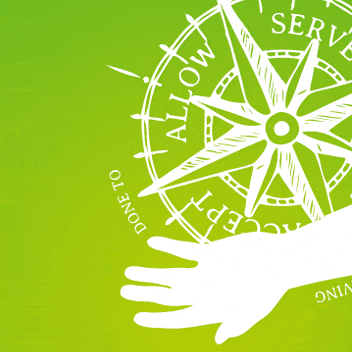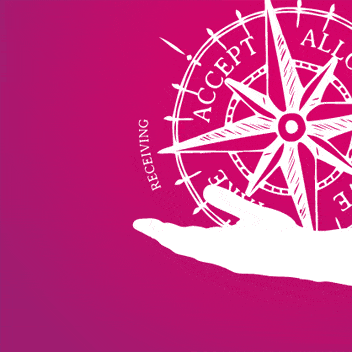
How to get better at receiving
Think about the last time someone paid you a genuine compliment – how did you feel about receiving it? How did you respond?
Chances are you might have felt a little awkward or shy, or even dismissed or negated the compliment.
Most of us have been taught not to put ourselves first, which means receiving (even a compliment) can feel difficult to do well – especially when there’s another person involved.
That’s where the Wheel Of Consent is your friend!
Do you wish you could get better at receiving?
These 5 tips for getting better at receiving are a great starting point…
But what the Wheel Of Consent does is to add an extra level – both as a tool, and as an ongoing practice – helping you to understand what’s involved in receiving as well as how to get better at it.
The Wheel helps separate the component parts of giving and receiving into 4 distinct quadrants, so that you can begin to feel how each is different from the other.
Each quadrant has its own challenges, and each has a particular gift. Each comes with a responsibility, and each has a way it can liberate you.
There are 2 ways you can receive
Let’s take a look at some of the core essences of receiving when you’re with another person, and what to look out for when you’re building skills to get better at receiving…
There are two ways you can receive:
- One way to receive is to take action for your own benefit (known in the Wheel Of Consent as the Taking quadrant);
- The other way you can receive is by someone else taking action for your benefit (known as the Accepting quadrant).
Either way, the important thing is that it’s for you; it’s something that you want.
The art of Taking
In the Taking quadrant you’re doing two things (and without both things happening it’s not consenting receiving):
- Taking action for your own benefit
- Respecting the limits of the person giving you what you want
The essence of the Taking quadrant is integrity: acknowledging there’s something you want, and honouring the person who’s allowing you access in order for you to get what you want. You become the guardian of their limits, so you need to be trustworthy.
How to get better at Taking:
- Above all else respect the limits of the person who’s giving – don’t try to sneak a bit more than you agreed, or push them to give more than they’re willing to.
- Within those limits put yourself first – Taking is for your benefit so make sure you’re really getting what you want!
- The better you get at respecting their limits the more you can relax and enjoy yourself – if it helps you can check in with your giver from time to time to make sure they’re still willing to give what you want.
The art of Accepting
In the Accepting quadrant you’re doing two things (and again, both need to be happening for it to be consenting receiving):
- Asking someone else to take action for your benefit
- Respecting the limits of the person giving you what you want
The essence of the Accepting quadrant is gratitude: believe that you are worthy to receive what you want, and enjoy it when you receive it. Take all the time you need to ask for what you really want; change your mind, and stop when you’ve had enough.
How to get better at Accepting:
- Put yourself first – Accepting is for your benefit
- Respect your giver’s limits, but don’t try to take care of them; trust that they’ll let you know if they need to stop or change something.
- Don’t put up or go along with something if it’s not quite right – if you really believe it’s for you, act like it!
The question to ask yourself is not ‘why don’t I like this?’, but ‘what do I want instead?’
If you want some really simple language to use to help you create better experiences of receiving check out the 6 words you need for consent.
And you can work with me to learn and practice skills to help you Meet Your Needs more effectively.
The quadrants
Each quadrant in the Wheel Of Consent creates a different experience and teaches you something different about yourself. Learn more about each one:
Enjoyed reading this?
If you've found this page helpful you can get more tips and resources for better relating straight to your inbox. Sign up here and get my free How To Be Heard guide to start you off:
Explore more:
A simple approach to consent and boundaries
If you feel overwhelmed by the idea of consent and boundaries here are some simple things to focus on which will make it easier to understand.
Read MoreWhy are we so scared of talking in the bedroom?
Talking in the bedroom is often viewed as ‘dirty’ or avoided completely. Find out why it’s time to change that narrative.
Read MoreGiving and receiving explained – 6 key ways to tell the difference
If you think giving and receiving don’t need to be explained you might be surprised by this handy guide that breaks down the differences
Read MoreEvents & courses
Learn To Touch – Supported Self Study Course
Online. Discover a whole new approach to touch that will change how you feel – literally! A short, affordable, practical guide you can learn in less than an hour a day.
Read More







